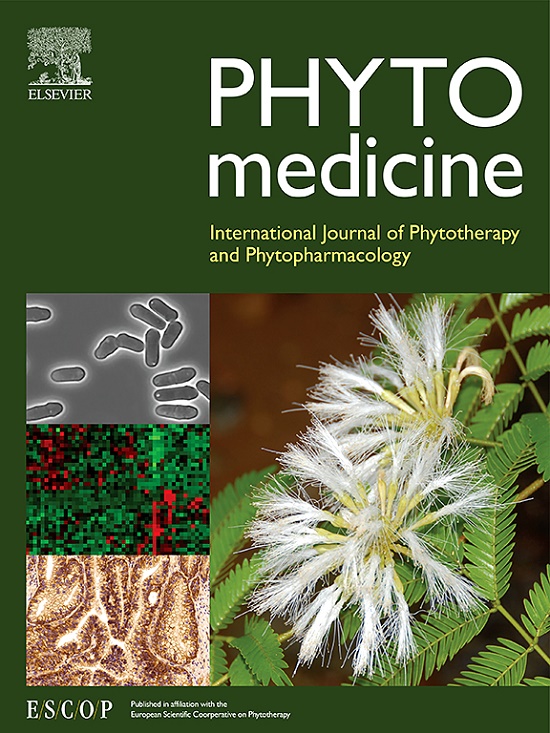Guttiferone E from Brazilian red propolis inhibited wound-isolated methicillin-resistant Staphylococcus aureus and enhanced the bactericidal action of suppressed macrophages
IF 6.7
1区 医学
Q1 CHEMISTRY, MEDICINAL
引用次数: 0
Abstract
Background
Propolis has been traditionally used to treat inflammatory and infectious diseases, and it is still used and researched worldwide. Methicillin-resistant Staphylococcus aureus (MRSA) may cause invasive infections and propolis anti-MRSA activity has been analyzed.
Purpose
A standardized red propolis extract (SRPE), its benzophenones-rich fraction (BRF), and isolated benzophenones (guttiferone E - GUT E, and oblongifolin B - OBL B) were assayed for their antibacterial and immunomodulatory action.
Methods
Formulations (BRP28, BRP29, BRP150, BRP153, and BRPLUS) were prepared and their minimum inhibitory concentrations (MIC) were assessed. The synergistic action of GUT E with antimicrobials was evaluated on a wound-isolated MRSA, as well as the inhibition of biofilm formation by the formulations (BRP28 and BRP29) and GUT E. Tohoku Hospital Pediatrics-1 (THP-1) cells were used to investigate cytokine production and the bactericidal activity of suppressed macrophages against MRSA. Computational predictions were performed with GUT E and antimicrobials to observe their interaction with the active and allosteric site of penicillin-binding protein 2a (PBP2a).
Results
SRPE and BRF were not efficient against MRSA while GUT E and OBL B exerted a potent activity. GUT E exerted a synergistic effect with carbapenems and vancomycin. BRP28, BRP29, and GUT E inhibited biofilm formation and increased the antibacterial capacity of suppressed macrophages, with no differences in cytokine production. GUT E showed a high binding affinity to PBP2a.
Conclusion
GUT E exhibited a direct anti-MRSA activity and indirectly enhanced the macrophage bactericidal activity. Molecular docking suggested that GUT E has a versatile interaction with PBP2a.

巴西红蜂胶中的古铁弗酮 E 可抑制伤口分离出的耐甲氧西林金黄色葡萄球菌,并增强受抑制巨噬细胞的杀菌作用
本文章由计算机程序翻译,如有差异,请以英文原文为准。
求助全文
约1分钟内获得全文
求助全文
来源期刊

Phytomedicine
医学-药学
CiteScore
10.30
自引率
5.10%
发文量
670
审稿时长
91 days
期刊介绍:
Phytomedicine is a therapy-oriented journal that publishes innovative studies on the efficacy, safety, quality, and mechanisms of action of specified plant extracts, phytopharmaceuticals, and their isolated constituents. This includes clinical, pharmacological, pharmacokinetic, and toxicological studies of herbal medicinal products, preparations, and purified compounds with defined and consistent quality, ensuring reproducible pharmacological activity. Founded in 1994, Phytomedicine aims to focus and stimulate research in this field and establish internationally accepted scientific standards for pharmacological studies, proof of clinical efficacy, and safety of phytomedicines.
 求助内容:
求助内容: 应助结果提醒方式:
应助结果提醒方式:


